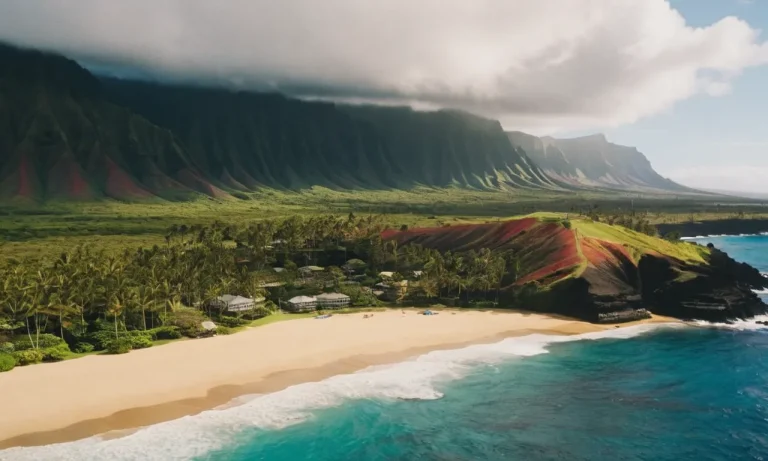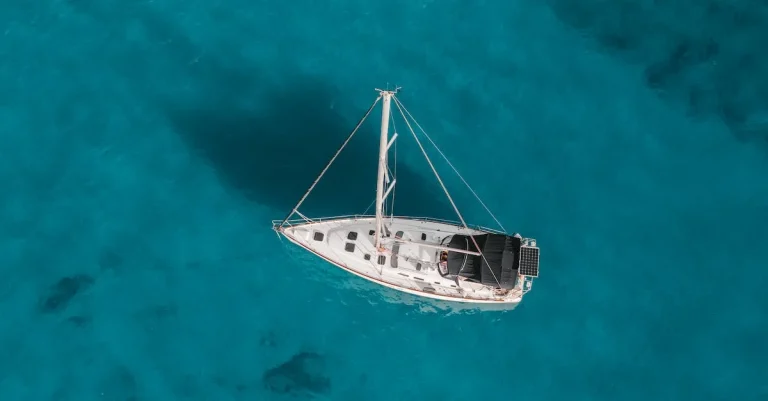Save money on your next flight
Skyscanner is the world’s leading flight search engine, helping you find the cheapest flights to destinations all over the world.
The arrival of Christian missionaries in Hawaii marked a pivotal shift in the islands’ cultural and political landscape. Their influence fundamentally shaped modern Hawaii as we know it today.
If you’re short on time, here’s a quick answer to your question: The first company of American missionaries arrived in Hawaii on March 30, 1820, led by Hiram Bingham.
In this comprehensive article, we will explore the background behind the missionary movement to Hawaii, provide details on the key figures and events surrounding their arrival and early years in the islands, discuss the wide-ranging impacts the missionaries had on Hawaiian society, and summarize the legacy of this turning point in history.
Historical Backdrop of Hawaiian Society Pre-Missionary Contact
Indigenous Religion and Social Structure
The indigenous Hawaiian religion prior to missionary contact revolved around the belief in many gods and goddesses connected to nature. This polytheistic religion integrated themes of animism, ancestor worship, and shamanism.
At the top of the highly stratified social structure were the ali’i (chiefs) who claimed divine descent from the gods and commanded respect and tribute from the maka’ainana (commoners). The kahuna (priests) oversaw religious ceremonies, temples (heiau), and sacred spaces.
The social order was reinforced through the kapu system of laws and taboos that regulated daily life by gender, class, and ritual pollution.
Initial Western Contact and Changes
The first documented Western contact was made by British explorer Captain James Cook in 1778, ushering monumental changes. Iron tools and implements, introduced through trade, enhanced productivity yet disrupted traditional crafts.
Europeans brought deadly diseases like smallpox and influenza that decimated almost 90% of Hawaii’s 300,000 natives by the 1850s (Encyclopaedia Britannica). As traditional religion floundered in the face of devastating depopulation, some Hawaiians were drawn to the Christian faith of early traders and adventurers even before missionaries arrived.
Origins of the Missionary Effort in Hawaii
Early New England Missionary Societies
In the early 19th century, several Protestant missionary societies were established in New England, motivated by a desire to spread Christianity internationally. Some key societies included the American Board of Commissioners for Foreign Missions (ABCFM), founded in 1810, and the Missionary Society of Connecticut, founded in 1798.
These groups sponsored some of the first American missionary efforts in Hawaii. Their members were inspired by their Christian faith to bring religion, education, and trade opportunities to native Hawaiians.
As New England merchants and sailors traveled frequently to Hawaii in the 1810s, news of Hawaiian culture and religion stirred significant interest back home in supporting missionary work there.
Motivations to Spread Christianity in Hawaii
There were several intertwining motivations for 19th century American Christians to spread their faith in the Hawaiian islands:
- Religious conviction – Protestants believed it was their duty to share the “truth” of the Gospel and save souls.
- Cultural superiority – Most missionaries saw Hawaiian culture and religious beliefs as uncivilized and wished to remake Hawaii in the American image.
- Strategic value – Missionaries recognized that Hawaiians could serve as stepping stones for further missionary work across the Pacific.
- Trade/commerce – Mission posts developed strong economic ties between New England and Hawaii through trade of goods and supplies.
While missionaries denounced the native Hawaiian religion and rituals like hula dancing, their efforts did have some positive impacts. They developed written forms of the Hawaiian language, introduced widespread literacy through Bible reading, and assisted in modern state-building inspired by American political systems.
Arrival of the First Company of Missionaries
Key Figures in the Pioneer Company
The Pioneer Company consisted of a group of American Protestant missionaries who arrived in 1820 to spread Christianity to the Hawaiian islands. The group contained two key married couples: Hiram and Sybil Bingham, and Asa Thurston and Lucy Goodale Thurston.
Hiram Bingham was considered the leader of the Pioneer Company. He established the first Christian mission in Hawaii at Kailua-Kona on the island of Hawaii. His wife Sybil was a teacher who educator native Hawaiian children.
Asa Thurston set up schools and helped Bingham establish Christian missions across Hawaii. His wife Lucy compiled an early Hawaiian dictionary while teaching Hawaiians English literacy and Bible studies.
Voyage Aboard the Thaddeus
The missionaries journeyed for about 183 harrowing days aboard a 136 ton sailing ship called Thaddeus. The ship Captain Hezekiah Horton navigated the dangerous passage around the tip of South America and across the vast Pacific Ocean.
The extreme conditions of storms, blistering heat, overcrowding, and spoiled food caused great misery for many on the ship. 4 year old Sophia Bingham was so sick they thought she might perish. Fortunately just the one crew member died before reaching Hawaii.
The missionaries kept themselves occupied with prayer meetings, scripture studies, and preparations for their work ahead. They practiced their missionary farming skills by raising live chickens and potatoes on deck.
Landing in Kailua-Kona on March 30, 1820
On March 30, 1820 the Thaddeus anchored at Kailua-Kona on the island of Hawaii after 6 months at sea. The pioneers could not contain their joy at surviving the crossing and finally reaching the beach of the long-sought destination.
However, they were met with a somber greeting. Only weeks before a local battle known as the Battle of Kuamoʻo had killed about 80 Hawaiian warriors. Bingham described the tears and wailing of relatives conducting funeral rites near the coast.
The missionaries waited patiently and eventually secured land in Kailua granted by the young King Kamehameha II and permission from his stepmother Queen Kaʻahumanu to stay.
Early Missionary Activities and Influence
Establishing Stations and Schools
The first Protestant missionaries arrived in Hawaii in 1820, sent by the American Board of Commissioners for Foreign Missions. Over the next few decades, they established stations and schools across the islands to spread Christianity and western ideas.
By 1863, the missionaries had set up over 1,000 schools with over 50,000 students!This rapid establishment of infrastructure allowed them to quickly and deeply influence native Hawaiian society.
The missionaries focused on learning the Hawaiian language and translating the Bible to connect with the people. They also emphasized teaching western skills like reading, writing, math, and trade skills. Most Hawaiians were eager to learn, as they recognized the value of western knowledge.
In just a generation after the missionaries arrived, Hawaii had one of the highest literacy rates in the world!
Impacts on Traditional Culture and Belief Systems
While bringing opportunities, the missionaries also suppressed Native Hawaiian cultural expression. They banned traditional dance, chants, artistic expression, and cultural practices they deemed savage or ungodly.
Over decades, knowledge of traditional stories, beliefs, and customs began to fade amongst younger generations.
The missionaries also brought devastating disease like smallpox and measles, which killed thousands of Hawaiians. With the population ravaged, many questioned old beliefs and became open to Christianity. As Christian converts increased, ancestral temples fell into disuse.
By the mid 1800s, Hawaii was largely converted.
While Christianity brought benefits like literacy, the changes were still traumatic for Hawaiians as traditional lifestyle and identity were stripped away. Modern scholars encourage cultural renewal to rediscover ancestral heritage. Perhaps therein lies the path to balance and mutual understanding.
Evolution of the Missionary Effort in Hawaii
Later Reinforcements and Expansion
After the initial arrival of American Protestant missionaries in 1820, later groups continued to bolster their ranks over the next few decades (Hawaiian Mission Children’s Society). While the original band numbered just seven married couples sent by the American Board of Commissioners for Foreign Missions, by 1863 over 184 missionaries had served in Hawaii (The Hawaiian Journal of History).
This continual flow of missionaries allowed their influence to spread across the islands. By 1850, Hawaii had become the most intensely missionized place on the planet, with a ratio of one missionary for every 250 Hawaiians (National Park Service).
Their outposts and schools popped up in both rural villages and bustling port cities.
Statistical data shows that by 1863, Hawaii had:
| 184 | American missionaries served |
| 1,100 | Hawaiian language schools established |
| 52,000 | Hawaiian church members converted |
Difficult Early Years Give Way to Success
The initial years were filled with immense challenges for those first courageous bands of missionaries. They suffered from lack of provisions, diseases like typhoid fever, and culture shock upon encountering the native culture so different from their New England roots.
However, they persevered in pursuit of their goal of spreading literacy and Christianity in Hawaii. After developing a written form of the Hawaiian language in 1822, they translated the Bible and began establishing schools. Attendance climbed through the 1820s, signaling the start of real progress.
While the missionary efforts sought to replace native beliefs with Christianity, their push for literacy had unintended positive impacts. It led to a 19th century flourishing of Hawaiian literature, with Hawaiians utilizing the written language to record their history, traditions, and culture for future generations (NPS).
Truly a double-edged sword of advancement and colonialism!
Conclusion
The arrival of Christian missionaries irrevocably shaped the trajectory of Hawaiian history. While their intentions were sincere, their presence led to the suppression of native culture and identity. However, missionaries also made positive contributions through education, medicine, and technology.
The complex legacy of Hawaii’s missionary period continues to inspire analysis and debate down to the present day.






